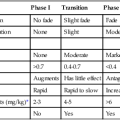
How are medications made? The process of innovating and developing a new pharmaceutical drug is a comprehensive one, and it involves numerous steps – including phases such as laboratory testing, preclinical and clinical research, peer review and board approval, and finally, post-market safety checks and monitoring.
Are you curious to learn more about the innovation and development of new pharmaceutical drugs? This article will discuss how medications go from idea to market. Stay with us as we break down the steps of this fascinating process.
Step 1: It All Starts in the Lab
The process of creating a new pharmaceutical drug begins with a preliminary period of discovery and development. As part of this initial phase, clinical laboratory researchers start by testing molecular compounds to identify new, exciting, and effective combinations.
This exploratory phase assists clinical researchers in conceptualizing future drug innovations and begins to form the building blocks that support the making of a new medication.
Step 2: Research – Preclinical and Clinical
The next step in the drug development process is undertaking clinical studies of the proposed new medication. This step involves both the preclinical and clinical phases of research.
As part of the preclinical research phase, the safety, effectiveness, and potential toxicity of new medications are tested via either in vitro or in vivo study methods. The difference? In vitro studies require the researcher to examine substances within a laboratory test tube or Petri dish. In vivo research, on the other hand, performs tests on living organisms – often, animal subjects. In the clinical phase, human test subjects are introduced to ensure the drug is safe for consumption.
So, how does one become qualified to perform this type of preclinical and clinical research? Specialized programs like the University of Findlay online pharmacist degree train pharmacists not only to serve their communities but also to work in the academic and research environments that often contribute to the process of creating new drugs.
Step 3: Peer Review and FDA Approval
After a new medication has been conceptualized, created, and tested by researchers in preclinical and clinical lab environments, the US Food and Drug Administration (FDA) must then review and approve its usage before it can be safely taken to market.
The FDA Drug Review process involves several key steps;
1. Researchers Submit New Drug Application (NDA)
In their New Drug Application (NDA), clinical researchers must outline every element of the proposed pharmaceutical innovation for review by the FDA. The application must provide critical details pertaining to the drug – such as suggested labeling and directions for use, for instance.
2. FDA Reviews the Safety and Effectiveness of the New Drug
In the review process, the FDA will thoroughly inspect the presented medication, as well as the evidence that supports the necessity of its release into the market.
3. FDA Approves the Drug for Labeling and Public Sale
Once a medication has been deemed both effective and safe for human consumption, the FDA will approve it for labeling and public sale. This enables the developers of the drug to release it onto the market – ready for public consumption, and available to be prescribed by medical professionals and purchased in pharmacies by patients.
Step 4: Safety Monitoring (Post-Market)
After the new drug has been released for public sale, the FDA will continue to monitor and assess its safety and effectiveness. This includes evaluating reports from patients and medical practitioners alike, that highlight any potential issues, problems, or side effects relating to the consumption of the drug and its usage.
~
As discussed today, the process of innovating, developing, and releasing a new pharmaceutical drug onto the market for public consumption is multifaceted.
First, clinical researchers conceptualize ideas for new medications in the lab environment. Next, they conduct preclinical and clinical studies into the safety and effectiveness of these proposed innovations – performing either in vitro or in vivo research, or both in some cases. The new drug must then be reviewed and approved by the FDA before it is released onto the market for sale to the public. Following FDA approval, the drug will continue to be monitored and assessed, to ensure it remains safe to consume over time.




